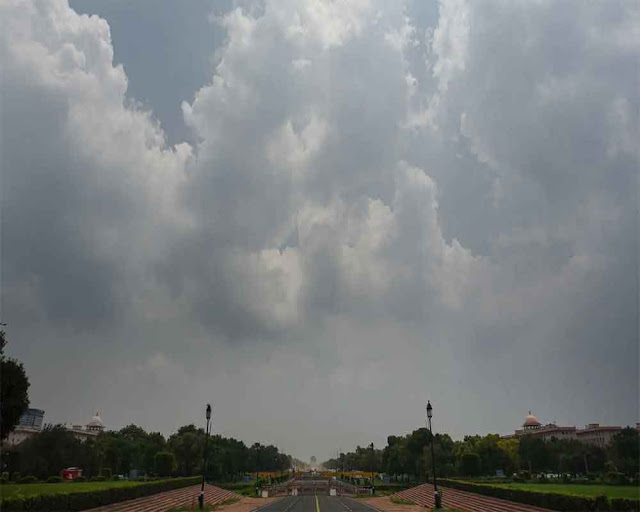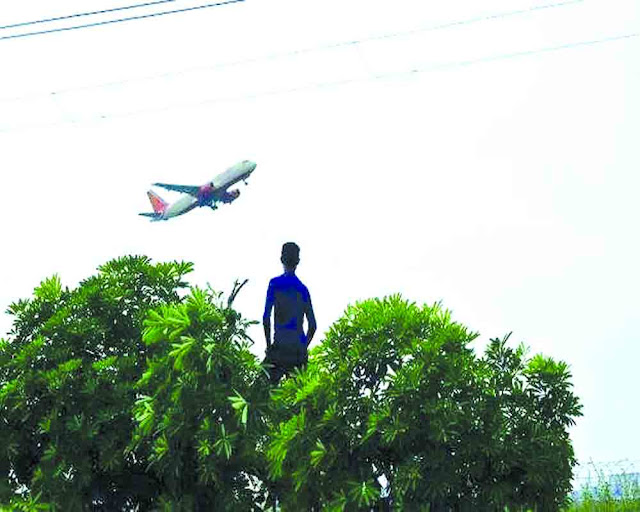Monsoon reaches Jaisalmer, Delhi's periphery but gives national capital a miss
Southwest Monsoon rains reached the desert district of Jaisalmer and Ganganagar, its last outposts, on Monday, but gave Delhi and parts of Haryana a miss.
It rained in the periphery of Delhi -- Aligarh in Uttar Pradesh and Karnal in Haryana -- but clouds hovered over the national capital, without giving any relief from the heat. The rains also covered west Rajasthan, Punjab and other parts of Haryana.
In 2002, monsoon reached Delhi on July 19. This is the most-delayed monsoon in the city since then.
The Northern Limit of the Southwest Monsoon (NLM) currently passes through Jaisalmer, Nagaur, Bharatpur, Aligarh, Karnal and Ganganagar, the India Meteorological Department (IMD) said.
The Southwest Monsoon covers Ganganagar and Jaisalmer in Rajasthan after it has covered almost the entire country.
"In association with continued prevalence of moist easterly winds from the Bay of Bengal in the lower levels since the past three days, enhanced cloud cover and scattered to fairly widespread rainfall during past 24 hours, the southwest monsoon has further advanced and covered most parts of Rajasthan and Punjab and some more parts of Haryana and west Uttar Pradesh on July 12," the Met office said.
IMD Director General Mrutyunjay Mohapatra said the Southwest Monsoon clouds are hovering over the national capital since Saturday, even the wind pattern has changed and easterlies have brought moist winds.
"But it has not rained so far. This is a very peculiar situation," he said.
Mohapatra said the arrival of monsoon over Delhi will be declared as soon as it rains since the other conditions have been fulfilled.
"Monsoon is a large-scale phenomenon. When the monsoon circulation prevails over a region, it does not mean that it will rain in all parts at a time. Widespread rainfall occurs when there is a low-pressure system or a cyclonic circulation. You get rain everywhere. There is no low-pressure system near Delhi or northwest India at present," he said.
The IMD had earlier said monsoon would hit Delhi on June 15, which would have been 12 days early, but the wind system entered a "break" phase.
In early June, the Met office said the conditions will become favourable for monsoon to advance to Delhi and other parts of northwest India by July 7.
Later, it said Delhi will get its first monsoon rains around July 10.
The weather department revised the prediction yet again on Saturday, saying monsoon, the most delayed in 19 years, may reach the capital in the next 24 hours. But it kept the city residents waiting on Sunday and there has hardly been any rainfall on Monday too.
As monsoon played truant in the region, Central Delhi is now the most rain-deficient district in the country. Receiving only 8.5 mm rainfall against the normal of 132 mm since June 1, when the monsoon season starts, it has recorded a shortfall of 94 per cent.
Overall, Delhi has so far received 67 per cent less rainfall than normal, putting it in the category of "large deficient" states.
The IMD said it is continuously monitoring the further progress of monsoon into the remaining parts of the country.



Comments
Post a Comment